Here is the Volume 2 of American Football from When you watch something, visit us first! Mr. Yorihisa SEKIGUCHI, former Head Coach of the “ThreeNailsCrowns “, the American Football team of J.F.Oberlin University told us about the Characteristics and Roles of each position of American Football. This is the combined version of Part 2-1 through 2-4 on our YouTube channel.
In the American Football Vol.1, we learned what happens in that “mess” during American Football games.
Mr. Yorihisa SEKIGUCHI, former Head Coach of “Three Nails Crowns” which is the American Football team of J. F. Oberlin University, told us again about the characteristics and roles of each position.
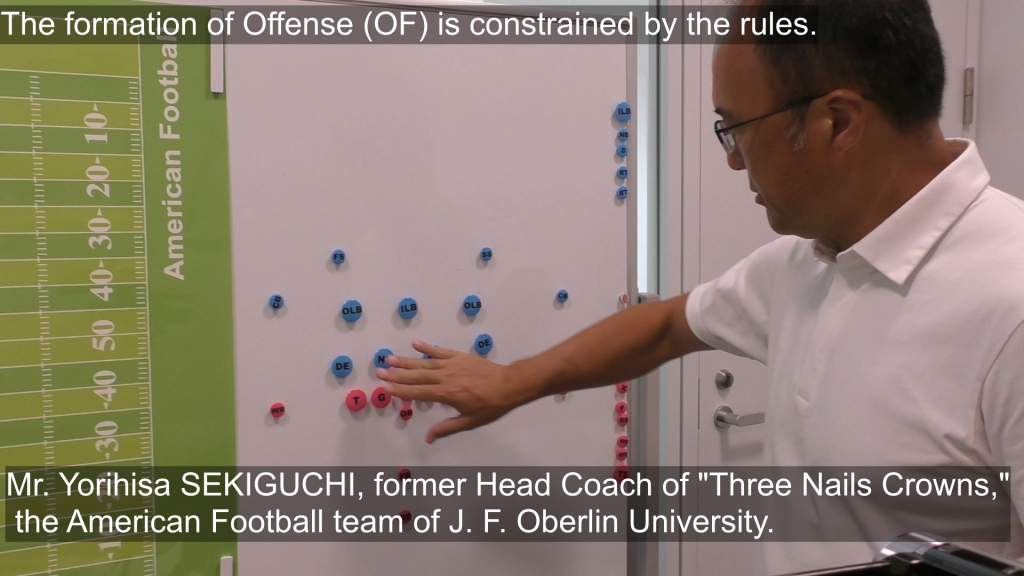
Part2-1 Characteristics and roles of each position (Offense-1: Offensive Line & Tight End)
OF must always have at least 7 players in a horizontal line at the ball (=Line of Scrimmage).

5 of those 7 players will be the Offensive Line (OL). Only 2 players on both ends of the front line can catch a pass. Therefore, these 5 players cannot catch a pass and are not allowed to touch the ball. The other 4 OF players, other than these 7 players, are allowed to be positioned anywhere.
Offensive Line (OL)
Offensive Line (OL) consists of 5 players: Center (C), Guards (G) on either side of C, and Tackles (T) outside of them.

C has the role to pass the ball to the Quarter Back (QB), called “Snap,” to start the each play of American football. C is also responsible for checking Defense (DF) formation and communicating it to other OF players, so he is relatively stable, snaps to QB consistently, and is often also an intelligent player.
Then next are these two G, who must constantly face these 2 large defensive players, so players who are relatively large and good at 1-on-1 are often assigned.
Next is T. These Defensive Ends (DE) are the position with the most QB sacks. Then, as these players (DE) become more and more athletic, T must also be face against DE, therefore to compete with these big but quick players, equally athletic and sizable players are needed in American Football these days .
The basic concept of OL is to have 5 relatively large players in a row.
Tight End (TE)
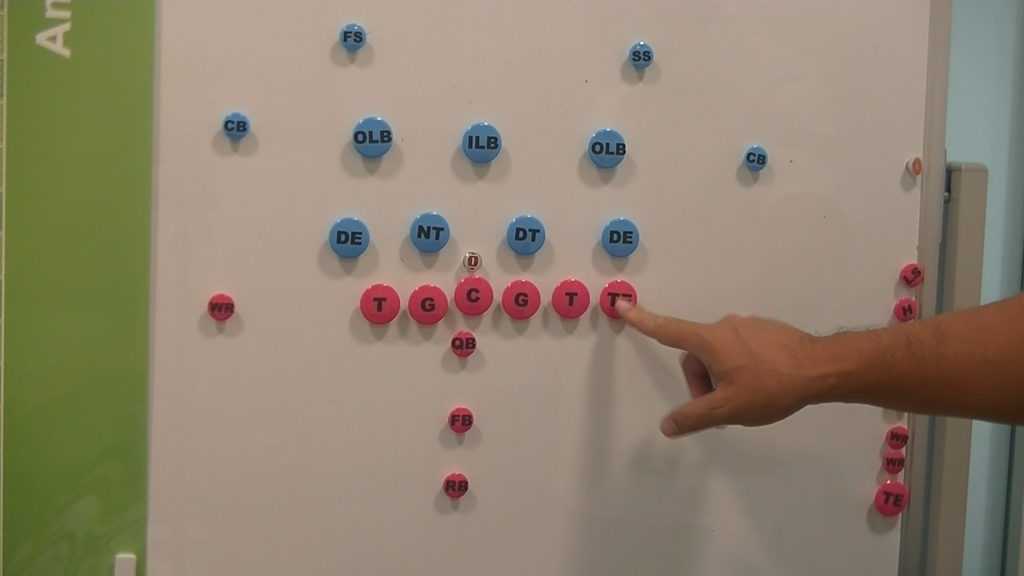
TE is a very under-resourced position. As TE has the role of blocking large opponents with OL, he is a relatively large player, in addition to that, TE may be out for the pass course and catch passes from QB. Therefore, TE is a position required to be large and strong enough to face Defensive Line (DL), and also to be fast enough to catch passes as Wide Receivers (WR) do.
Part2-2 Characteristics and roles of each position (Offense-2: Quarter Back/Running Back/Wide Receiver)
Quarter Back (QB)
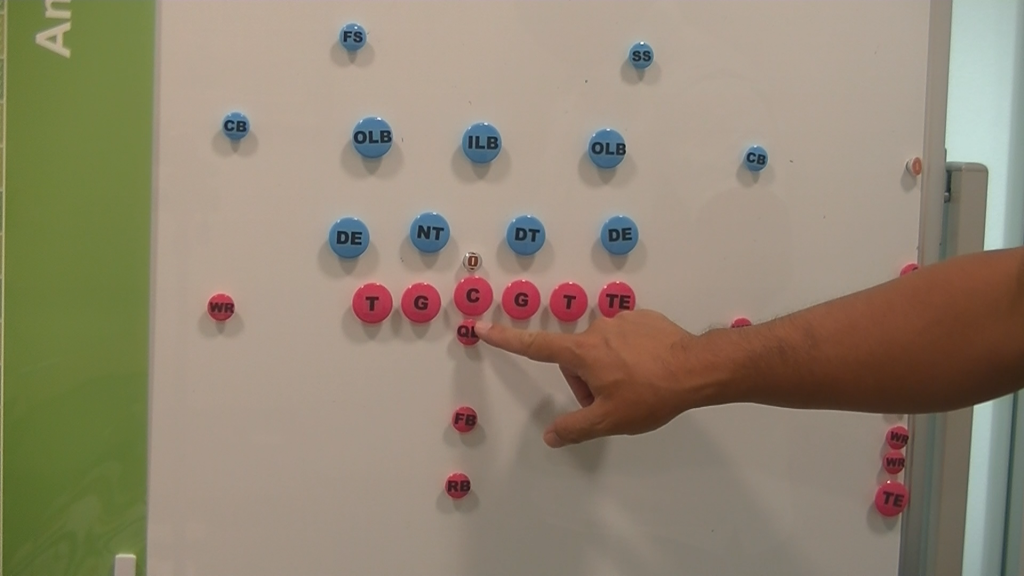
QB is responsible for communicating signs and play instructions given by the coach from the sideline to the other 10 OF players, like a “coach on the field.” QB has also a role, with watching the DF’s formation, to change plays and to select better plays, so QB must be a relatively intelligent player, but also athletic as he may run with the ball himself, and physically and mentally strong as he is at risk of injury when QB is sacked.
Running Back (RB)
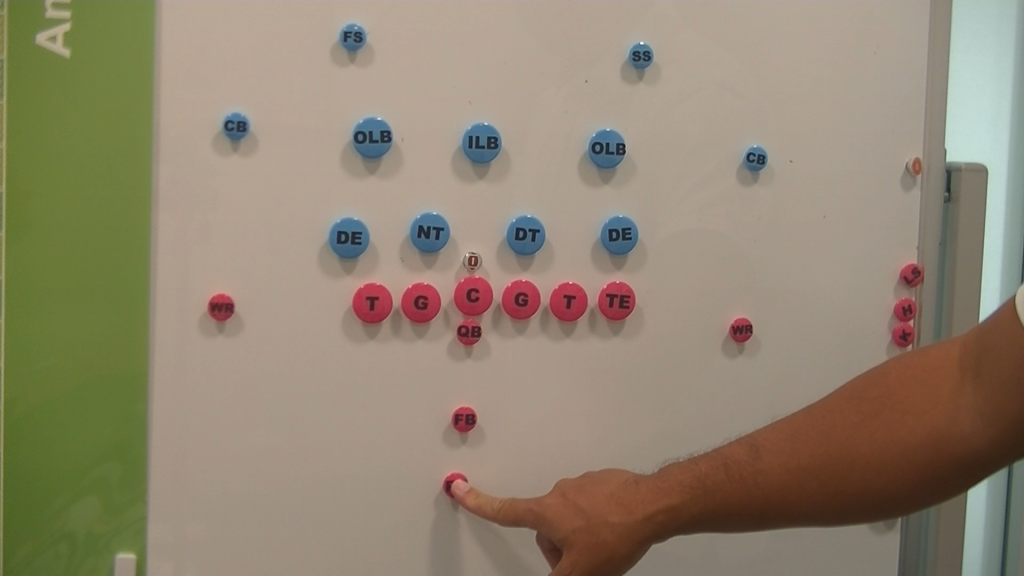
The role of RB is basically, with the ball handed from QB, to go strongly up in Run Play.
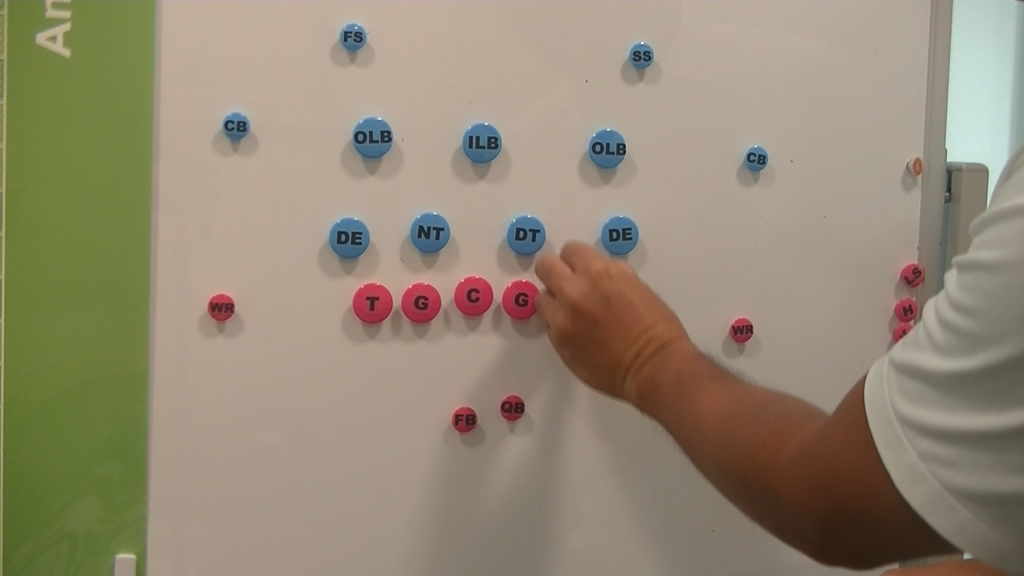
Ideally, RB should be fast as well as be a good physique and has an impact resistance.
Then Full Back (FB) from RB.
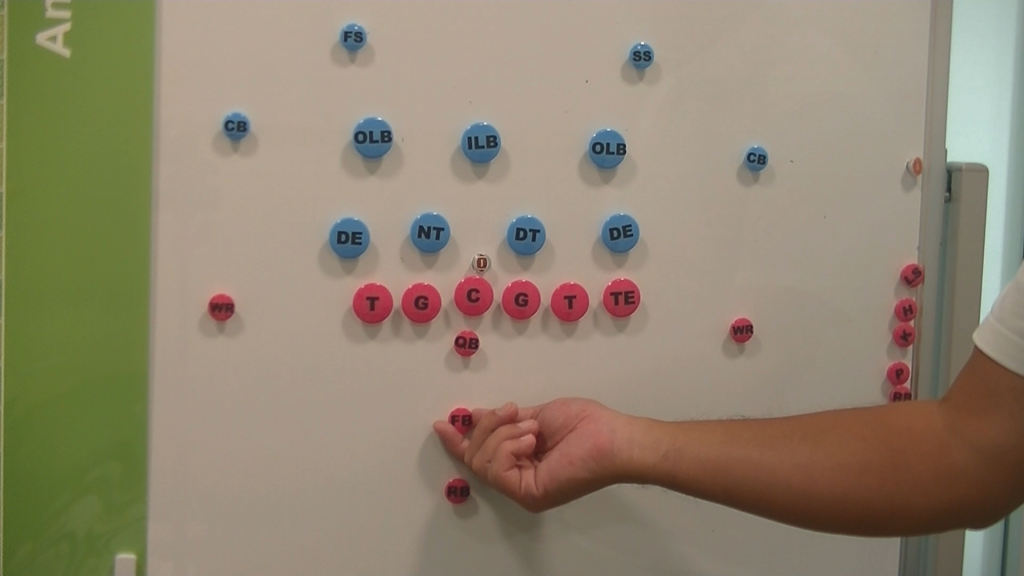
FB is responsible for opening the runway for RB to run. For example, with a block being made like this, FB goes to block this remaining player and let RB run this way.
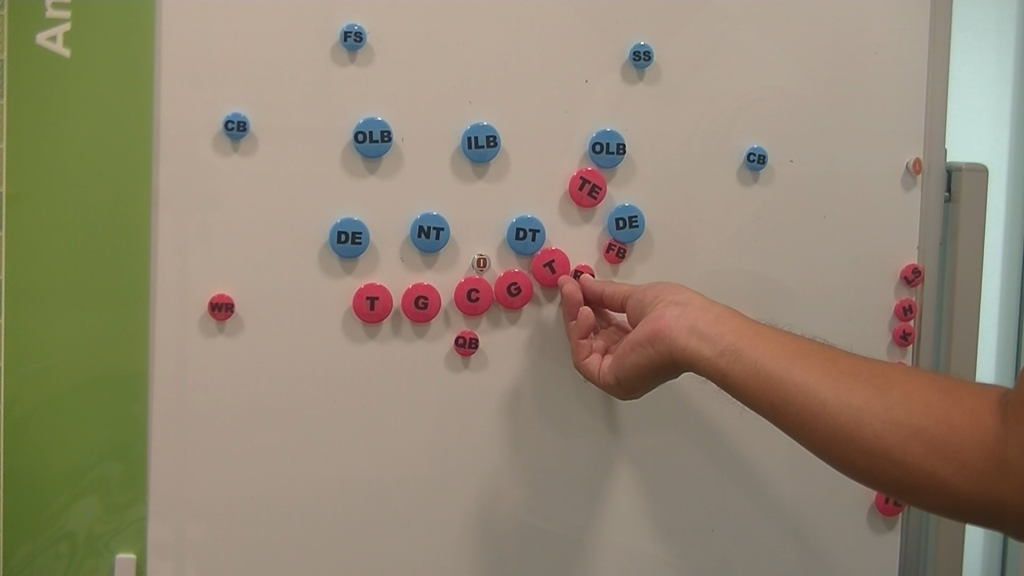
He specializes in this kind of blocking, but occasionally runs short distances with the ball himself.
FB is based on blocking, so foot speed is not as important as RB, but this position requires a big body, strong blocking, and,
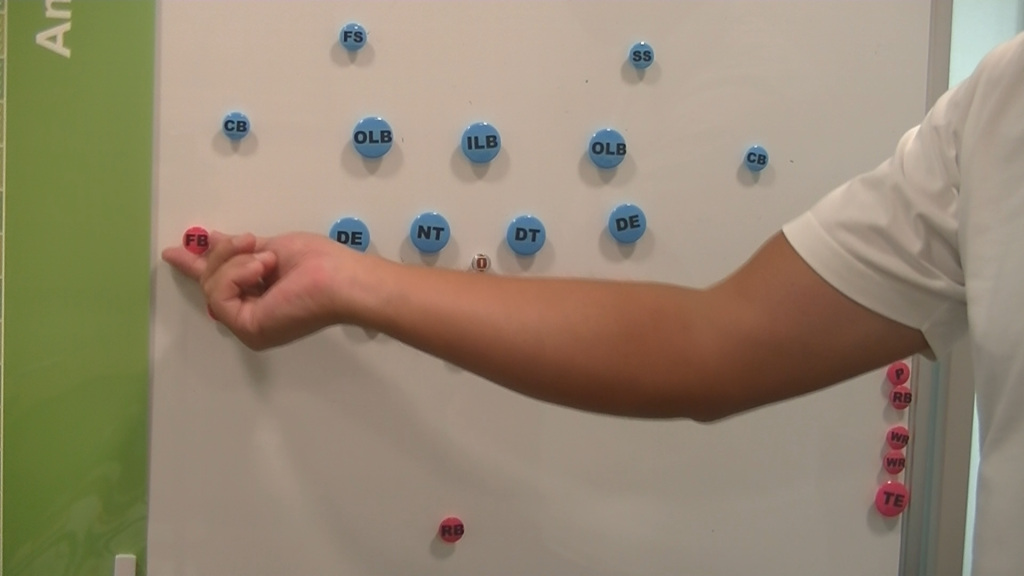
as FB may be on a passing course, dexterity to catch a pass.
Wide Receiver (WR)
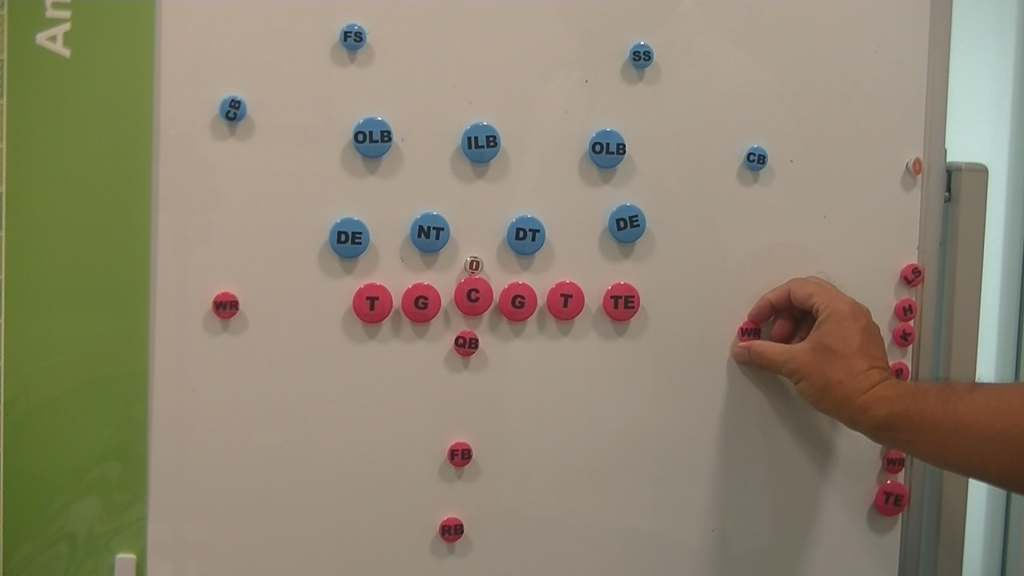
Finally, WR. There are two WR in this formation. Sometimes there are 3 WRs on the field, sometimes 4, sometimes only 1 WR. As it is so called “Wide Receiver”, it is positioned wide and outside and his role is to catch the ball thrown by QB. WR is more about speed rather than his size. He handles the ball well, has the speed to face speedy defenders, and his role is to catch the ball thrown to him.
Of course, there is another role to block these players during Run Plays,

but the main role is to catch the ball. So, players who are fast as well as RB and especially tall WR are useful these days.
Variation of OF Formation
As an example, a team that does Pass Play a lot might have 1 RB and 4 WR.
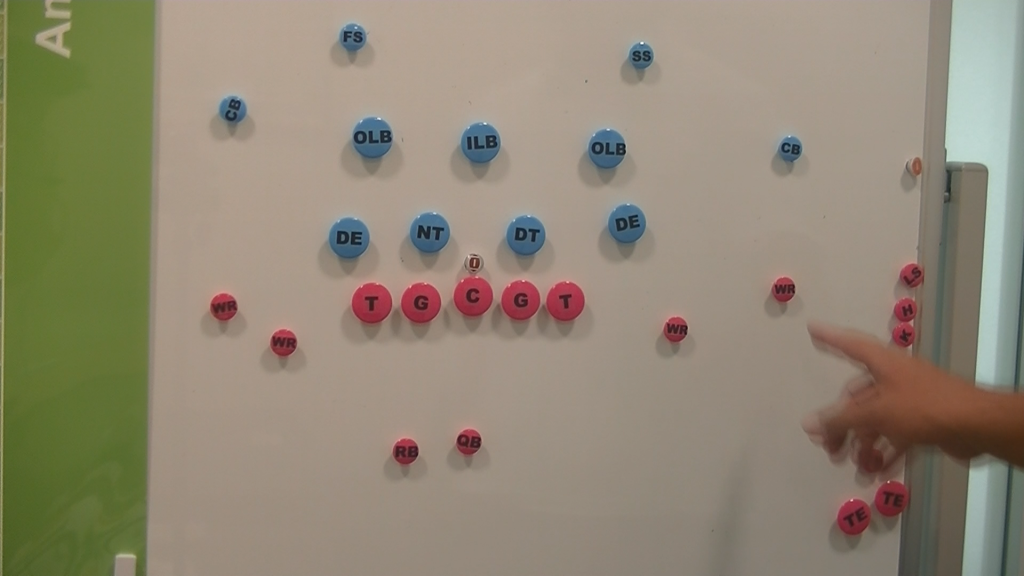
In this case, there are still 7 players lined up on the first line, and the players on both ends can catch a pass. The other 2 WR can be positioned anywhere. Here.Here.Here. Where they are positioned depends on the tactics of OF, but the only thing that remains the same is that there are 7 players on the first line.
On the other hand, in the same formation with 1 RB, for a team that does a lot of Run Plays, 2 TE can be allocated like this way, allowing the team to have big players at the front of the line and to run solid Run Plays,
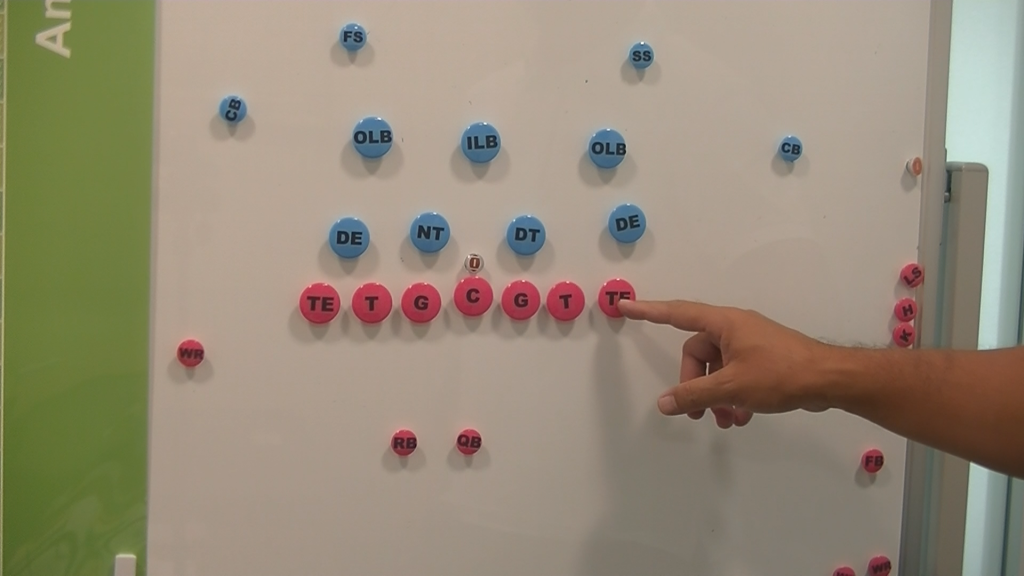
while the WR can get out to the pass course as well as TE at both ends also do so. What we often see these days is 1 TE, 1 RB, and 3 WR,
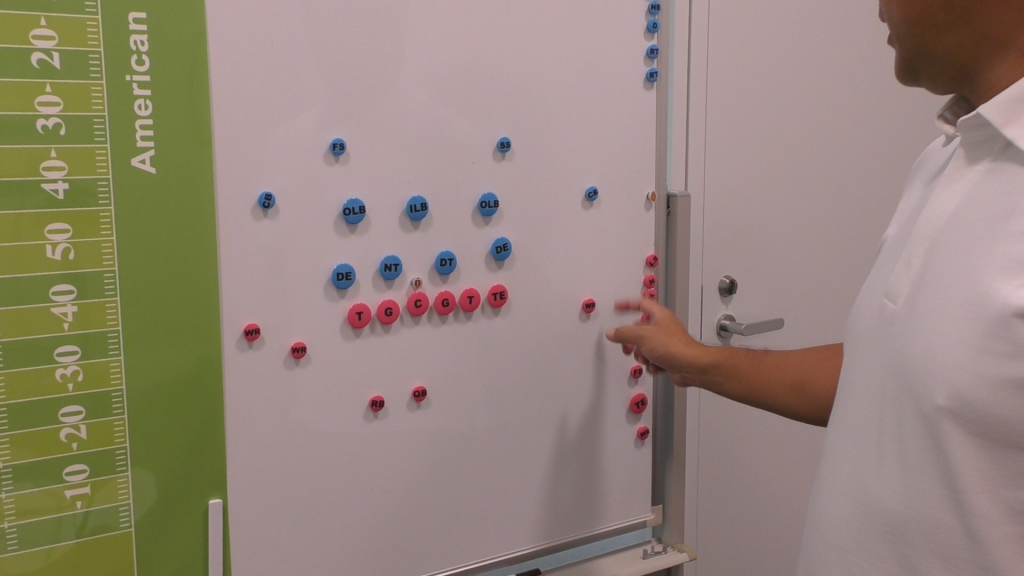
which of course changes depending on the situation, but I think it is a basic formation in the NFL, NCAA, Japanese college, and X league.
Part2-3 Characteristics and roles of each position (Defense-1: Defensive Line & Linebacker)
Now, let me explain about the characteristics of each DF position.
Defensive Tackle (DT) Nose Tackle (NT)
First, regarding Nose Tackle (NT) which we often call this position as Nose Guard, and Defensive Tackle (DT).
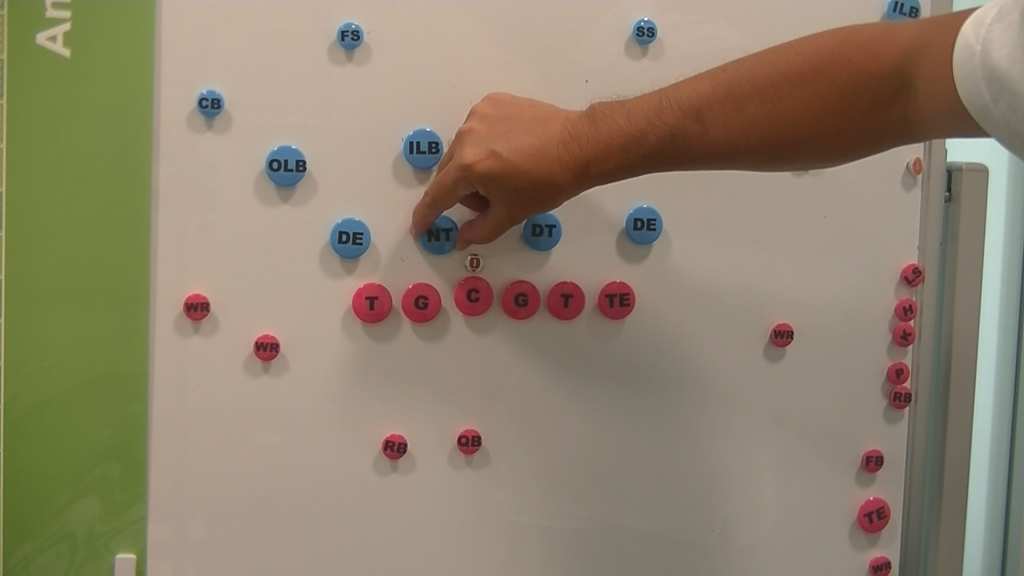
These two players inside have a role in Pass Rushing to keep QB from throwing, but their main role is to stop Run Plays coming up the middle. Therefore, the first thing required for them is a large size. Then, they are also required to have some agility despite their size, and there are relatively many players who can compete with power and speed against large OL.
Defensive End (DE)
Then, regarding Defensive End (DE).
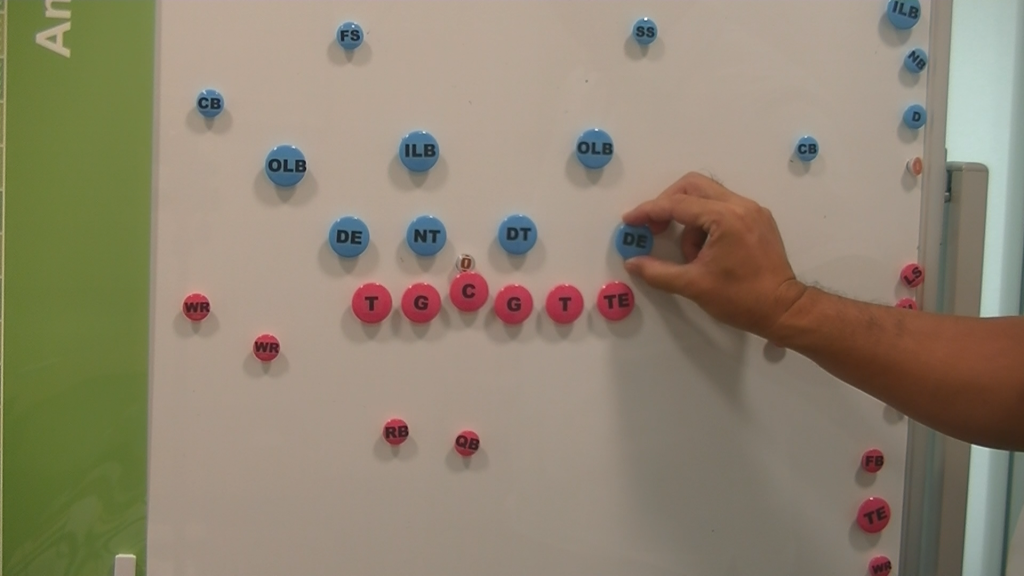
These DE players are still able to put the most pressure on QB who throws passes. Rush from the outside, and sack QB, or have QB throw a pass earlier than usual. This is a position where many players make relatively Big Plays. So, the first thing required for DE is a large size to face such a big OL player. Moreover, T in front of DE is also becoming more and more athletic, so they need to be athletes who have the speed to beat T. So, it is not all right if they are big simply because they are DL players, but also as they have a role of protecting the outside Run Plays among DL, therefore, DE must have big size but also quickness, compared to NT and DT, to deal with the fast speed of RB.
Linebacker (LB) Inside Linebacker (ILB) / Outside Linebacker (OLB)
Regarding Linebackers (LB). There are 3 LB in this formation.

We call the space between left T to right T “Tackle Box,” in which players bump into each other and RB carries the ball 3 to 4 yards. Inside Linebacker (ILB) is the player with the most tackles and is very good at tackle. At the same time, ILB must be able to confront OL when they come out to block. Therefore, among LB, ILB are often wide and big, and players who can compete well with OL and be able to tackle Run Plays in the middle are required.
Also, like C and QB among OF, ILB often gives signs for other DF players to adjust to OF formation, especially in Tackle Box. ILB are relatively large and also good at tackle, but are also often intelligent players who have leadership, ability to make sign calls, and that to adjust to OF plays.
Next to ILB, let’s look about Outside Linebacker (OLB). They are located on outside. OLB are also responsible for tackling RB like ILB, but compared to ILB, they are responsible for Pass Cover to TE and WR.
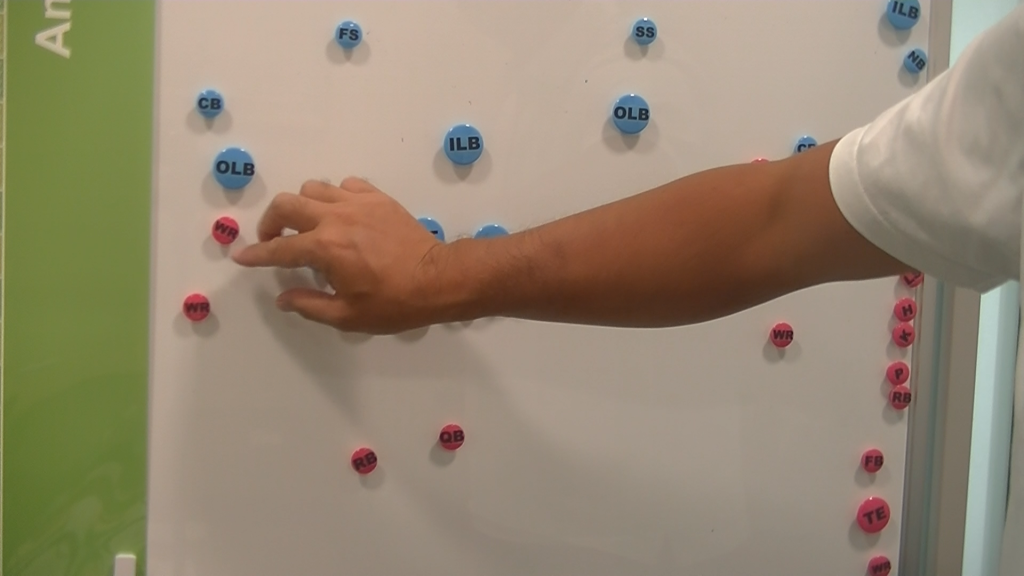
Of course, ILB may be in Pass Cover, but OLB is the player who can protect both Run Plays and Pass Plays. So OLB are often taller than ILB and faster on their feet. Speed is needed for OLB to compete with these agile players who can catch Passes. OLB also occasionally join Pass Rush.
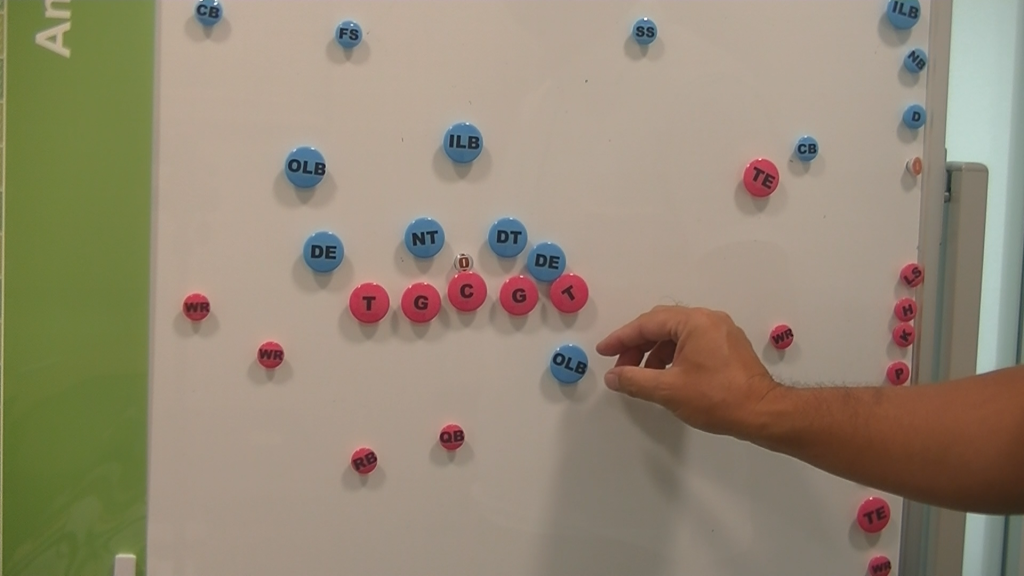
Therefore, OLB requires athleticism in a high level. OLB defend Run Play, defend Pass Play, and sometimes do Pass Rush. And therefore, these two positions including DE are often large, fast, and athletic.
Part2-4 Characteristics and roles of each position (Defense-2: Defensive Back)
Corner Back (CB))
Corner Back (CB) probably think 70-80% out of their job is to deal with WR and protect Pass.
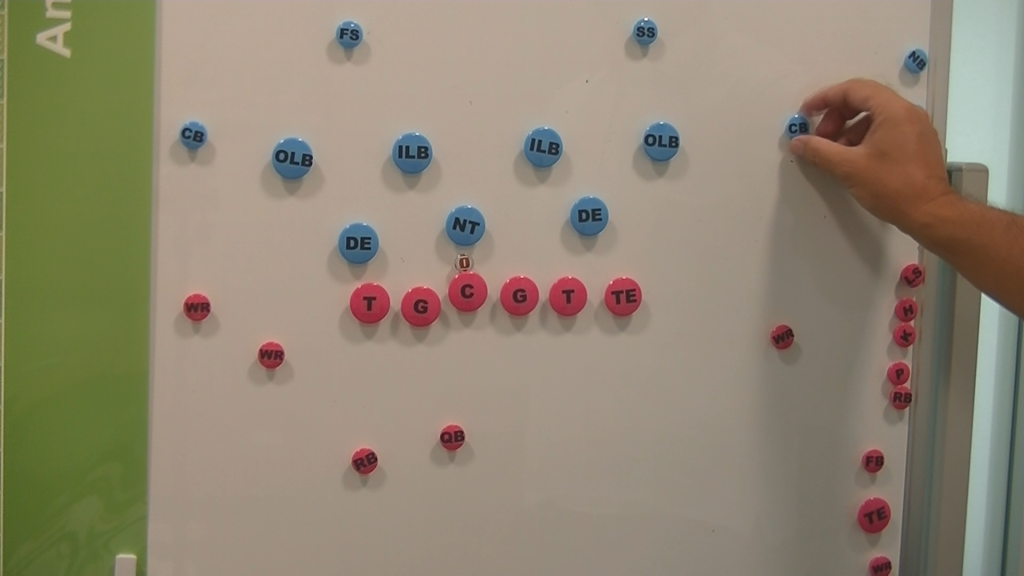
In front of CB, there would be probably WR who may be the fastest among the opponent team, so whether DF defend by zone or man-to-man, to deal with such fast WR, the fastest players of the team are assigned as CB. So, agility is required for CB anyway to face players with speed like WR, even if they are not so tall.
Safety (S) Strong Safety (SS) / Free Safety (FS)
There are two Safeties (S): Strong Safety (SS) on the Strong Side (mainly the side TE is located) and Free Safety (FS) on the opposite side,
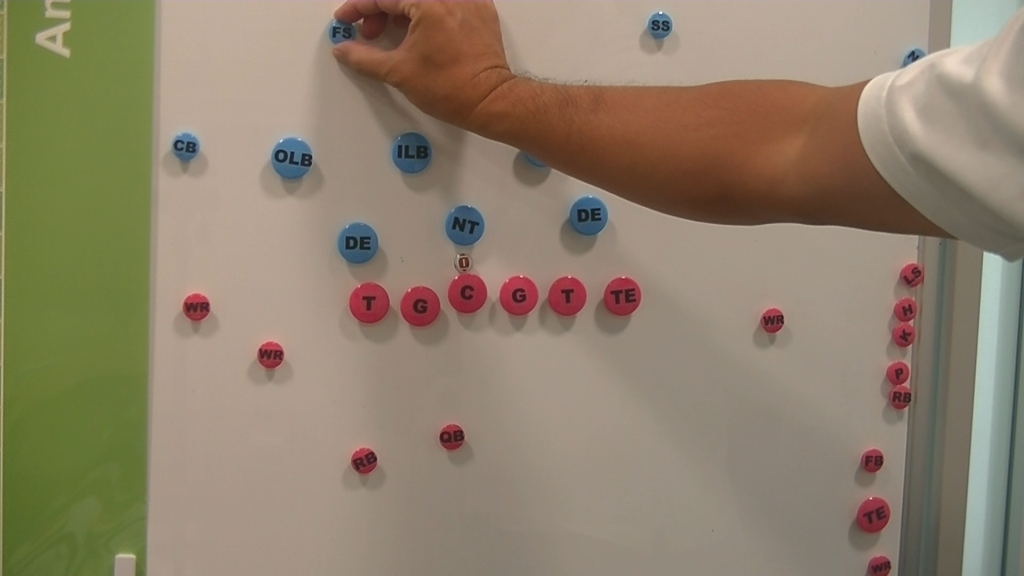
but the roles of each are not very different, and the first important role of them is to protect Pass well. And when Run Play by RB is very extended, S are the last ones who can tackle RB. In this case, to fail to tackle RB who has broken away by S,
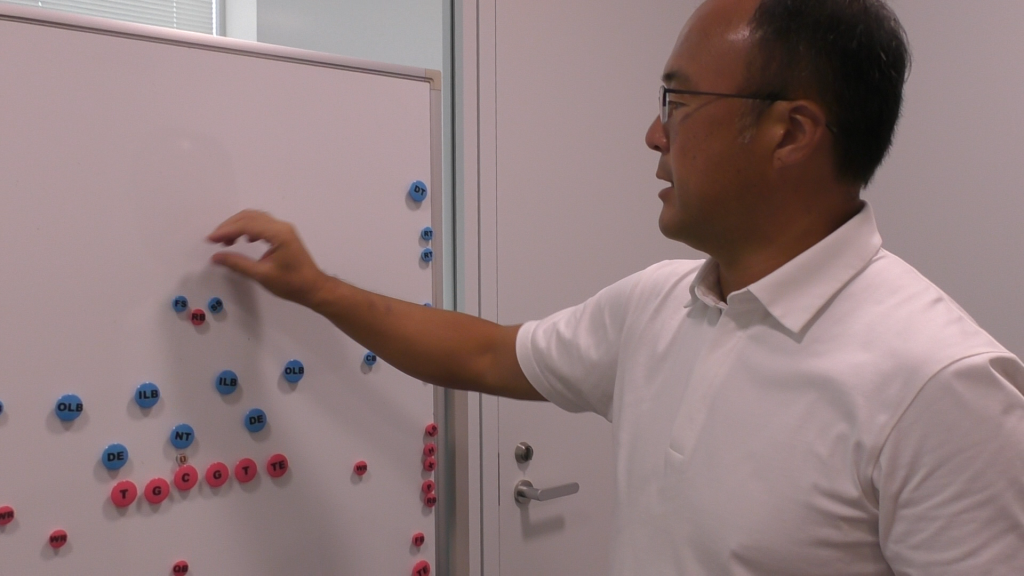
it means that the opponent will get Touchdown (TD) and directly lead to a loss of points, so it is important for S to tackle as well as Pass Cover. S must be able to stop a player who has broken free, and must also be fast and able to face speedy WR.
And, major role of S is to check OF formation and make adjustments relating to DF, such as “change the sign”, “change Blitz this way”, or “do normal defense without Blitz”. And S is also responsible for controlling other DF players with a broader vision, therefore, of course, S must not only have athletic ability, but also be a smart player who can detect various situations and communicate them to other DF players.
Variation of DF Formation
Now, here we have a DF formation called 4-3.

It has 4 DL and 3 LB. And It also has 4 DB (CB & S). This is the basic formation.
And, some teams employ another typical formation called 3-4,

which has 3 DL and 4 LB.
In Pass-heavy situations, such as 3rd or 4th Down, DF may put in 5th DB, called “Nickel Back (NB)”, while they have 4 DL and 2 LB. In a pass-heavy situation, DF have more DB with fast feet in advance like this.
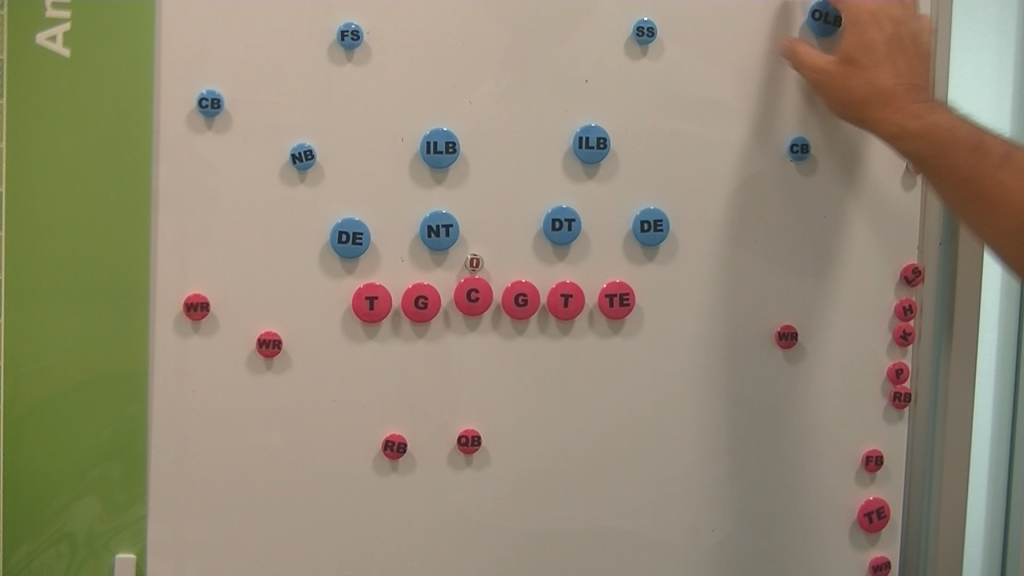
If and when it is obvious that OF is going to throw a Pass, DF may further reduce the number of LB and bring in a sixth DB, called Dime (D).
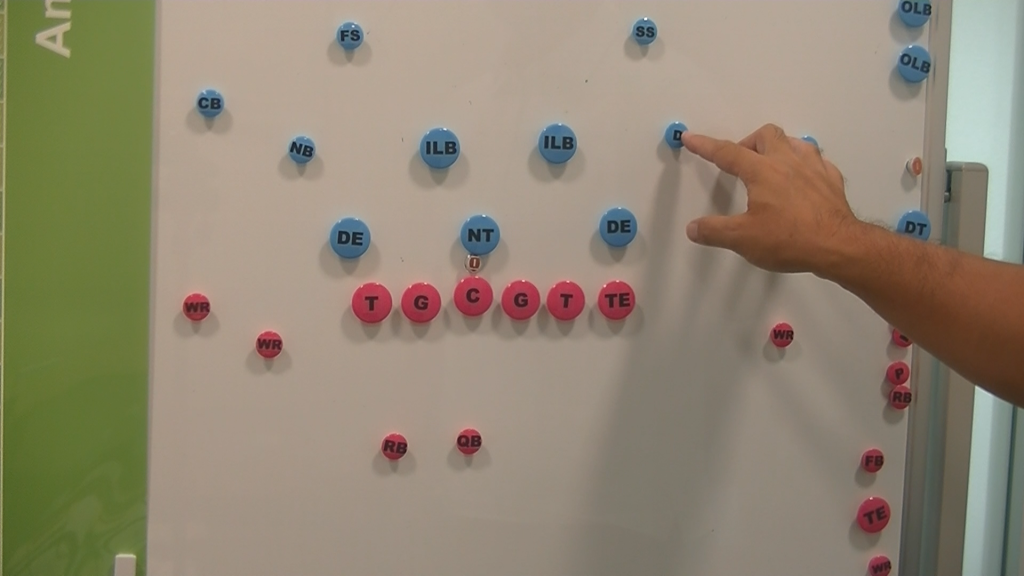
These are selected depending on how DF stops OF or what OF tends to do.
The current standard DF formation in NFL is often 5 DB while there are 4 or 3 DL and 2 or 3 LB.
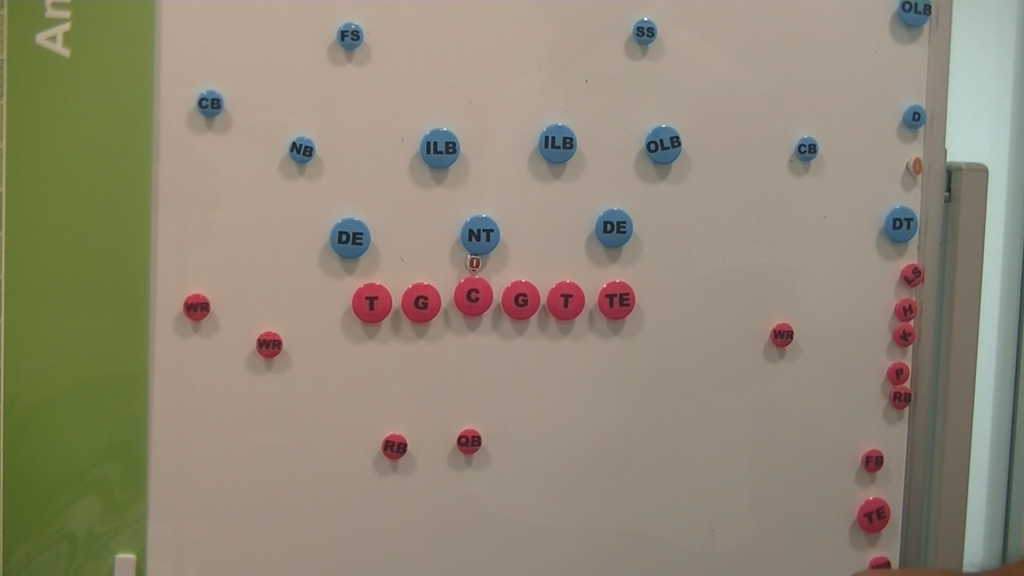
Share this content:
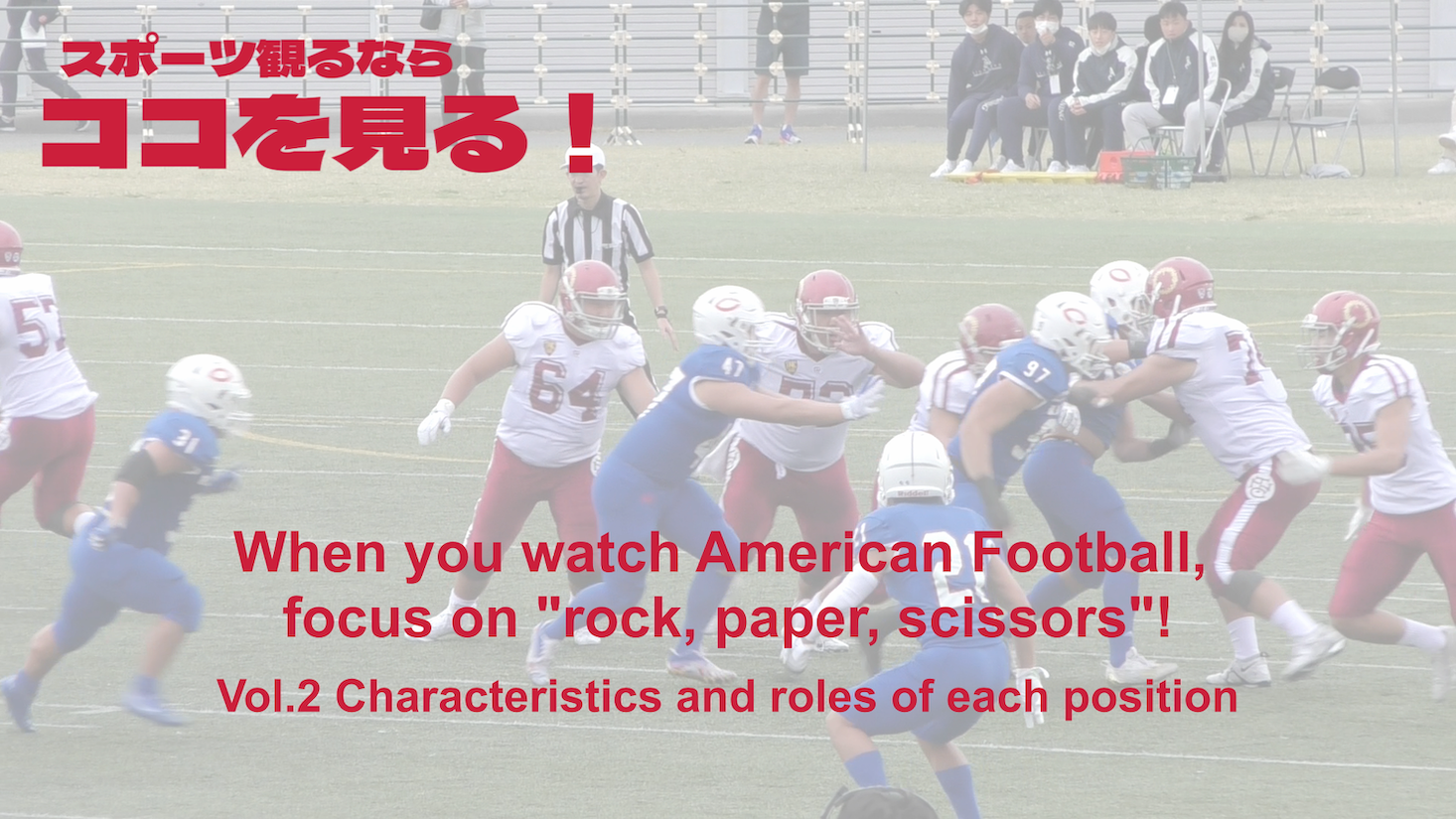
コメントを残す